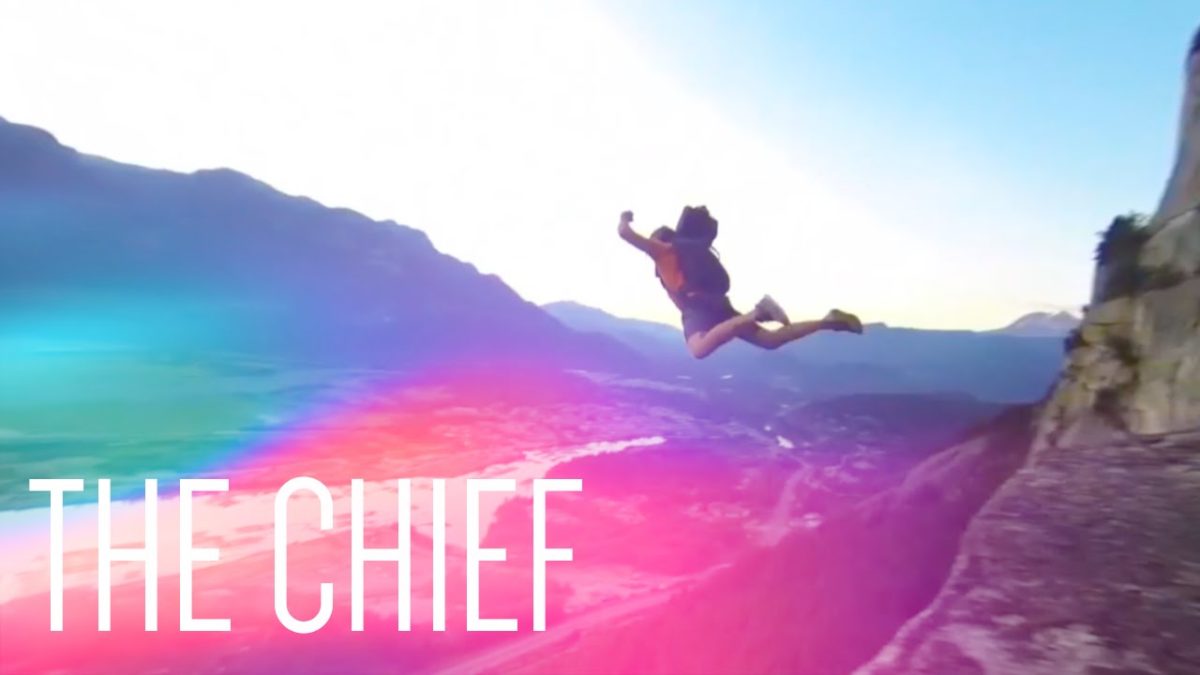Canadian Rescuers Busy with BASE Jumpers in Rockies and Squamish

While BASE jumping is one of the least practiced mountain sports in Canada, the numbers of rescues and deaths is on the rise. Last week, an American BASE jumper named Gary Kremer died after a jump off The Chief, about 600 metres above Squamish. The veteran jumper’s chute failed to open until seconds before impact. He was retired U.S. Marine Corps and had jumped of The Chief many times. Last year, Kyle MacDonald-Wolochatiuk died after speed-flying jump off The Chief. The 40-year-old hit a tree and fell to the ground. In 2013, Jeff Bertoia was the first speed-flyer to die near Squamish. In 2015, another man was rescued after a BASE jump landed him in trees on The Cheif. In 2010, then-mayor Greg Gardiner called for a ban of the sport, which was never enacted.
Current Squamish Mayor Patricia Heintzman said BASE jumping is legal in the provincial park that includes The Chief and that it would be difficult to regulate the activity. “People who do these extreme sports know the risks they’re taking, have prepared tremendously to do them, and you just have to hope they’re doing things within their skill set. I don’t think you can prevent people from trying to push the limits.” In Vancouver, a paraglider who jumped off Grouse Mountain required a rescue after getting caught in residential power lines. In 2008, the late Shane McConkey legally jumped from the Peak 2 Peak gondola in Whistler to celebrate its opening. In 2014, an Ontario man illegally reenacted the gondola jump and his accomplice was arrested. Also in 2014, 44-year-old Judd Feldman died from a paragliding accident near Pemberton north of Whistler.
BASE jumping is equally popular in Alberta, as laws against it outside of the National Parks seemed to have eased. In the Bow Valley and Kananaskis Country there are a number of exits jumpers use. Off the east end of Grotto is a steep 200-metre unclimbed wall where Calgary-based jumpers often leap from. Other peaks include the Wind Tower, Yamnuska, Ha Ling, Gibraltar and smaller walls. In 2014, Ralph Greenaway jumped off Mount Rundle and disappeared, his body has never been found. In 2015, a BASE jumping legend named Gabriel Hubert died after a jump off Ha Ling. “To participate in this activity you have to accept that you might die doing it,” Hubert once said. “You have to love it enough to accept that I guess.” His goal was to legitimatize the sport across Canada.
Also in 2015 were a number of rescues of BASE jumpers, including a critically injured man near Cline River and critically injured man near Nordegg. Earlier this year, a man jumped off Ha Ling near Canmore because he deployed his chute right after take off. The lines tangled and he slammed into the side of the iconic 600-metre wall. He then bounced and slid until his chute snagged and he was stuck 80 metres off the ground. The unnamed jumper broke a number of bones in his lower body and was rescued by Kananaskis Public Safety Specialists. A few weeks later, a paraglider jumped from Ha Ling and required a rescue. Kananaskis Public Safety Specialist Mike Koppang said it looks like a gust of wind partially collapsed the chute after he jumped, forcing him into the rocks, where he sustained leg injuries.
In 2007, jumper Jimmy Hall died on Baffin Island after pulling his chute late and landing in a couloir which he had wing-suited down for 29 seconds. Also on Baffin in 2010, Jim Mitchell died when he collided with a wall after jumping. In 2009, top climbers Leo Houlding, Sean Leary and Carlos Quiroga Suarez climbed Mount Asgard and then jumped off. Their film The Asgard Project won awards at the Banff Mountain Film Festival. The footage had them charged by Parks Canada as BASE jumping is illegal on Baffin Island. The charges against them were dropped in exchange for each paying $1,000 to an environmental damages fund and publishing apologies.
In total, 12 Canadian have died BASE jumping since 1986. The first recorded Canadian to die was Rick Stanley who passed away in Virginia after a leap from the New River Gorge bridge. Legendary skier Shane McConkey was the second Canadian to die after a BASE-ski accident in 2009. Eight Canadians have died in the past three years, the most recent being Kritin Czyz of Calgary who died on her fifth jump of the day on May 13, 2016, in Idaho.
Canada’s rescue technicians go by a number of names, including Visitor Safety Specialists, Search and Rescue and Park Wardens. As more people are heading into the back country for climbing, hiking, biking and flying, the people in charge of rescues are busier every year. Just the past few days, Kananaskis Country Public Safety Section has made 13 rescues, three on Yamnuska. Be sure to follow and support your local search and rescue teams, as they are an invaluable part of our outdoor community.


